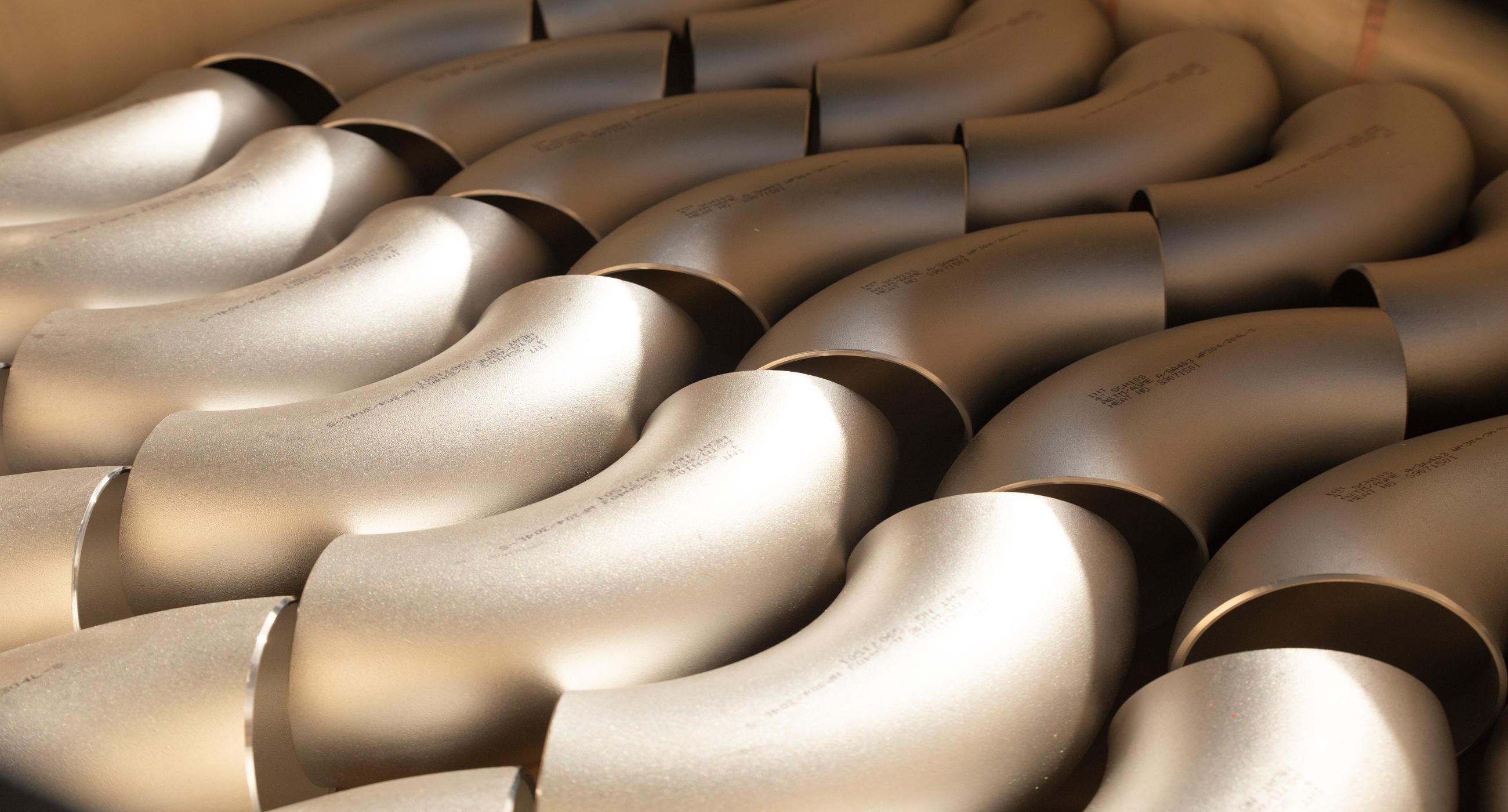Products
Standards and Regulations
The
stainless steel fittings according to the EN 10253 standard represent an important part of the world of fittings. The name itself provides some important information on this type of product:
- Fittings: these are components that allow the connection between pipes having axes and dimensions that can be both the same and different from each other;
- Stainless steel: the choice to use stainless steel for the production of this type of component derives from the fact that this material has the fundamental characteristic that the fittings must have: resistance to corrosion. These properties derive from the chemical composition which, in addition to the classic iron and carbon of steels, also has a high content of chromium and nickel.
- Standard EN 10253: citing the description of the standard itself "specifies the technical conditions of supply of fittings for welded and seamless pipes (elbows, concentric and eccentric reducers, Ti with equal and reduced derivation, covers) of carbon and alloy steels which are intended for use at ambient temperature, low temperature or high temperatures, and for the transmission and distribution of liquids and gases”.
The peculiar characteristic of this type of fittings is that they have smooth and non-threaded ends, suitable for making connections by welding and not using threaded assemblies between the pipes and the fittings themselves.
This choice allows to obtain permanent joints that do not have the problem of being able to loosen with the passage of time, as well as reducing the number of operations to be carried out in the production phase. Despite this, there are also problems relating to maintenance and replacement of damaged components, should a failure occur in operation.
The welding process of stainless steel fittings according to EN 10253
The welding process for connecting the stainless steel fittings with the pipes of the circuit in which they are installed is very delicate and must be carried out by qualified personnel equipped with suitable equipment. Usually, given the commissioning which can also concern difficult and not easily reachable areas, it is preferable to use a manual arc welding, trying to limit the heat on the fitting to the area of interest, avoiding to create extended thermally altered areas that can constitute subsequently of the areas of weakness that can induce subsidence of considerable importance.
A problem that can arise with the application of a welding is that stainless steel, generally of the austenitic type, undergoes sensitization of the dispersed carbides, with a significant loss of mechanical properties: for this reason, the control of the fundamental parameters of the welding must be stringent and their study is as central as the design of the fittings themselves.
The different sections of the EN 10253 standard for stainless steel fittings
The EN 10253 standard, as previously described, contains the technical supply specifications for stainless steel fittings for both welded and seamless pipes. This legislation is divided into several sections which are:
- 10253-1: deals with unalloyed steel fittings that are produced by plastic deformation and are not used in particular applications that require specific controls;
- 10253-2: contrary to the previous point, it concerns both non-alloy steels and alloy steels that require specific controls, in accordance with PED, or the legislation for pressure appliances;
- 10253-3: mainly concerns the components of interest within this study, namely austenitic and duplex stainless steels. In addition, attention is paid to components that do not require special controls from a regulatory point of view, that is, they are not components subjected to pressure;
- 10253-4: represents the completion of the previous point, as it involves the fittings and pipes that must comply with regulations such as those involving devices subjected to pressure.
For each of these sub-categories, moreover, there are regulations that regulate the construction of pipes and the composition of the steels with which they must be made. In particular, the austenitic 304 and 316 steel are of considerable importance and are used both for the construction of fittings and for the construction of other components such as valves.
The importance of complying with regulations for the supply of products
In the previous paragraphs, the main characteristics of the EN 10253 standard and the peculiar aspects affecting stainless steel fittings have been analysed. Scrolling through the sections and, in general, evaluating the standard as a whole, the importance of this regulation for the creation of these components and for their distribution on the national and international market appears evident.
The main advantages that derive from the application of regulations and compliance in the production phase are:
- unification of products and interchangeability: this feature is essential to be able to limit the variations which can be multiple and complicate both the selection and purchase phases and the ongoing maintenance phases;
- certification of the production chain: allows this product to be included within a Quality Management System which deals with all aspects of industrial production and not just the single product (in this case the fitting);
- respect for safety: it is a central issue for any industrial product but not only. In fact, guaranteeing a high safety standard represents an obligation to avoid problems which, in the case of fittings, can compromise the functioning of the systems but also cause more or less serious damage to people or buildings.
Although these are only the most obvious advantages, they clearly highlight why it is important to follow the regulations and respect them in their entirety.
